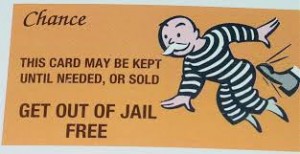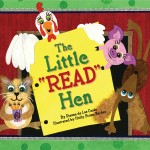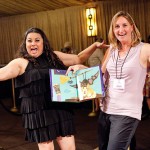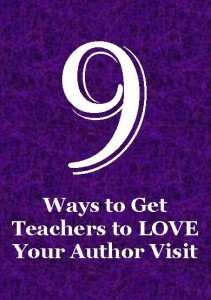 Are you the kind of author or illustrator who finds doing school visits to be excruciatingly painful? You don’t enjoy being on-stage during assemblies. You’re exhausted thinking of the energy it takes to be social off-stage with school personnel. You need lots of quiet time. But when you published your first book, someone told you that to be a children’s book author, you have to do school visits.
Are you the kind of author or illustrator who finds doing school visits to be excruciatingly painful? You don’t enjoy being on-stage during assemblies. You’re exhausted thinking of the energy it takes to be social off-stage with school personnel. You need lots of quiet time. But when you published your first book, someone told you that to be a children’s book author, you have to do school visits.
Well, I’m about to give you your “Get out of Jail Free” card:
• It is perfectly okay to never, ever do a public appearance.
• It is perfectly okay to take a break from doing appearances.
• And it is perfectly okay to focus all your energies on creating your next book.
It’s true that there are lots of benefits of doing school visits – connecting with readers, selling books, earning extra income. But if this causes more pain than pleasure, don’t do them.
So let’s back up a bit. Why are you a reluctant presenter? It’s possible that you are a true introvert. However, it could be that other circumstances are making you hesitant to do appearances. Here are five major challenges and solutions to think about:
Challenge: Family Obligations
Situation: Your kids may still in school, or your aging parents need attention. Schedules are crazy, and it’s difficult to justify time away from home. You want to squeeze out every moment of togetherness with you family while you can, and still write more books.
Solution: Limit appearances to within driving distance of your home. Do half-days (mornings only) so you can still pick up your kids at school. For appearances further away, consider doing virtual school visits via Skype, teleconferences or e-mail interviews. Map out days within a month that you will be available to do schools, and schedule all within that time frame
Challenge: Job Juggle
Situation: You are employed at another job to pay the bills consistently. Your time-off is limited.
Solution: Give your new books a big push at launch time, then ease off. If your family doesn’t mind, use vacation days for big events. Check with your employer about flex-time and trade evening or weekend hours for a day when schools are in session.
Challenge: Fear
Situation: You hate to ____ (fill in the blank with your own travel nightmare i.e. fly, drive, pack, etc.) and will do anything to avoid it.
Solution: If you fear flying but want to travel, either plan enough time for taking a train or bus, hire a driver, or enroll in a program such as www.gogetterjetsetter.com. For fear of packing (the thing I not so much fear as hate to do), check out www.onebag.com.
Challenge: Lack of Skill or Experience
Situation: You like the idea of doing school visits, but don’t know what to do for a program. Or you’re worried that the kids will get out of control
Solution: You’re in luck. Go to past blog posts on SchoolVisitExperts.com for advice. (You’re reading one now!) Read my columns, “The Truth About School Visits” (past and present) in the SCBWI Bulletin. Also, observe authors and illustrators in action at schools, libraries and bookstores. Join in supportive discussions about appearances on your local SCBWI listservs. Start with small events and work up to bigger ones.
Challenge: Shyness
Situation: Okay — so some of you would rather chew rats than stand in front of an audience.
Solution: There’s really no “solution” for being shy. It’s just who you are. But you’ve managed to cope all these years in social situations. And what you’re calling “shyness” may be just a lack of confidence. Introverts will find comfort in the posts at http://shrinkingvioletpromotions.blogspot.com/ . But if you would like to bolster your confidence, consider joining a local chapter of Toastmasters, the organization of choice for many shy authors, and you will amaze yourself with the strategies you’ll learn to become an engaging speaker.
Remember — if you’re invited to speak, it’s because a school admires your books as well as you, the creator. While you can politely decline invitations, you might give some thought about what’s standing in the way of your accepting their offer. And if you can find a way to meet your fans, it will extend the life of the books you’re creating.







